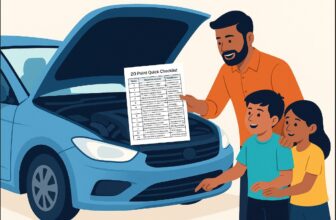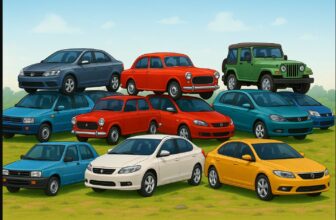India has long been a hub for motorcycles, with most two-wheelers focusing on affordability and practicality. However, in recent years, Indian manufacturers have pushed the boundaries of performance, producing bikes that deliver impressive speed and acceleration. While India is yet to produce a true superbike, some locally made models come surprisingly close to international competitors in their respective categories.
But how do these high-performance Indian motorcycles compare to the world’s best? Can they challenge global entry-level sportbikes or even performance cars in a straight-line sprint? In this article, we break down the fastest Indian-made motorcycles and see how they stack up against global rivals.
What Defines a Fast Motorcycle?
Before diving into comparisons, it’s important to understand what makes a motorcycle “fast.” Key metrics include:
- Top Speed: The highest speed a motorcycle can achieve under ideal conditions.
- 0-100 km/h Acceleration: The time it takes to reach 100 km/h from a standstill.
- Power-to-Weight Ratio: The balance of horsepower (bhp) to the bike’s weight, influencing acceleration.
- Torque Output: The force that propels the bike forward, crucial for quick launches.
Indian-made motorcycles may not rival global superbikes in outright performance, but they excel in efficiency, affordability, and real-world usability.
Fastest Indian-Made Motorcycles
1. KTM RC 390 (Made in India, Exported Globally)
- Top Speed: ~170 km/h
- 0-100 km/h: ~5.7 sec
- Power: 43.5 PS (~43 bhp) @ 9,000 rpm
- Torque: 37 Nm @ 7,000 rpm
- Weight: ~172 kg
The KTM RC 390, manufactured by Bajaj Auto in India, is one of the quickest Indian-made motorcycles. Its lightweight chassis and aggressive power delivery make it a serious contender in the entry-level sportbike category.
How It Compares Globally:
- Competes with the Yamaha YZF-R3 (42 bhp, 180 km/h top speed) and Kawasaki Ninja 400 (48 bhp, 190 km/h top speed).
- While slightly underpowered compared to its global rivals, the RC 390’s lightweight frame allows it to remain competitive.
2. TVS Apache RR 310
- Top Speed: ~160 km/h
- 0-100 km/h: ~7.2 sec
- Power: 37.48 bhp @ 9,800 rpm
- Torque: 27.3 Nm @ 7,700 rpm
- Weight: 174 kg
Developed in collaboration with BMW, the Apache RR 310 offers a refined sportbike experience. Its smooth power delivery and premium build make it one of the most exciting motorcycles in the Indian market.
How It Compares Globally:
- Competes with the Kawasaki Ninja 300 (39 bhp, 182 km/h top speed).
- While it lags in outright power, it provides a well-balanced riding experience with premium features.
3. Ultraviolette F77 Mach 2 (Top Variant – Electric Bike)
- Top Speed: ~155 km/h
- 0-100 km/h: ~7.5 sec
- Power: 40.2 bhp (Electric Motor)
- Torque: 100 Nm (Instant electric torque)
- Weight: ~197 kg
The Ultraviolette F77 is India’s first high-performance electric motorcycle, boasting instant torque and a futuristic design. While it lacks the extreme acceleration of global electric superbikes, it represents a significant step forward for Indian EV performance.
How It Compares Globally:
- Competes with the Zero S (160 km/h, 80 Nm torque) in the entry-level electric bike space.
- Lacks the range and high-speed stability of premium electric superbikes.
4. Bajaj Dominar 400
- Top Speed: ~160 km/h
- 0-100 km/h: ~7.1 sec
- Power: 39.42 bhp @ 8,800 rpm
- Torque: 35 Nm @ 6,500 rpm
- Weight: 193 kg
The Bajaj Dominar 400 balances performance with comfort, making it a great highway cruiser. It doesn’t match global sportbikes in acceleration, but it remains one of India’s best long-distance motorcycles.
How It Compares Globally:
- Competes with the Honda CB500X (47 bhp, 180 km/h top speed).
- Lacks the displacement and power of global adventure tourers but provides excellent value in its class.
5. Royal Enfield Super Meteor 650
- Top Speed: ~175 km/h
- 0-100 km/h: ~6.5 sec
- Power: 47 PS (~46.3 bhp) @ 7,250 rpm
- Torque: 52.3 Nm @ 5,650 rpm
- Weight: 241 kg
The Super Meteor 650 is Royal Enfield’s most powerful cruiser, offering strong mid-range torque and a relaxed riding experience. It isn’t built for outright speed but provides a powerful and comfortable ride unmatched by most Indian-made motorcycles.
How It Compares Globally:
- Competes with the Harley-Davidson Nightster 975 (89 bhp, 200 km/h top speed).
- Lacks the power of larger global cruisers but offers excellent value for money in its segment.
How Do Indian Bikes Compare to Global Superbikes?
| Motorcycle | Country | Top Speed | 0-100 km/h | Power | Torque |
|---|---|---|---|---|---|
| KTM RC 390 | India | ~170 km/h | ~5.7 sec | 43.5 bhp | 37 Nm |
| TVS Apache RR 310 | India | ~160 km/h | ~7.2 sec | 37.48 bhp | 27.3 Nm |
| Bajaj Dominar 400 | India | ~160 km/h | ~7.1 sec | 39.42 bhp | 35 Nm |
| Ultraviolette F77 | India | ~155 km/h | ~7.5 sec | 40.2 bhp | 100 Nm |
| Super Meteor 650 | India | ~175 km/h | ~6.5 sec | 46.3 bhp | 52.3 Nm |
| Yamaha YZF-R3 | Japan | ~180 km/h | ~5.5 sec | 42 bhp | 29 Nm |
| Kawasaki Ninja 400 | Japan | ~190 km/h | ~5.0 sec | 48 bhp | 38 Nm |
| BMW S 1000 RR | Germany | ~300 km/h | ~3.1 sec | 205 bhp | 113 Nm |
While Indian-made motorcycles offer strong performance within their respective categories, they do not yet compete directly with global superbikes in terms of top speed and acceleration.
Summary: How Far Can Indian Bikes Go?
Indian-made motorcycles have made significant strides in performance, with models like the KTM RC 390, TVS Apache RR 310, and Ultraviolette F77 offering respectable top speeds and quick acceleration. While they don’t match the sheer power of global superbikes, they hold their ground in the entry-level and mid-range performance categories.
Compared to international sportbikes like the Yamaha R3 or Kawasaki Ninja 400, Indian models provide competitive performance at a more affordable price point. However, they still fall short of global superbikes in top speed, power output, and high-speed stability.
With growing demand for high-performance motorcycles in India, the future of Indian superbikes looks promising. Manufacturers are pushing the limits of engineering, and it may not be long before we see an Indian-made motorcycle that can truly compete with the world’s best.





